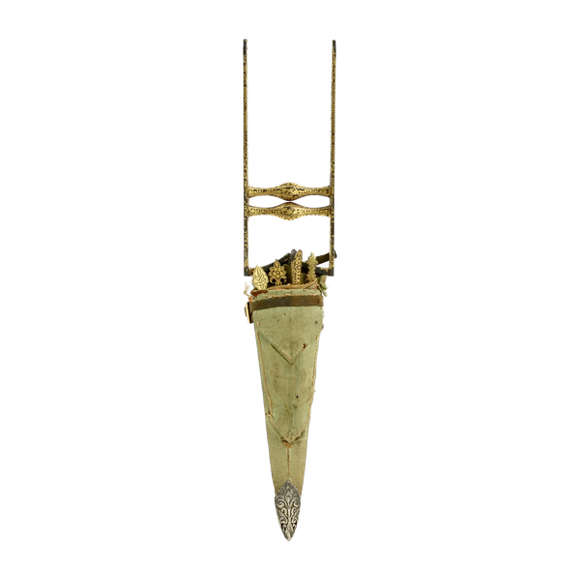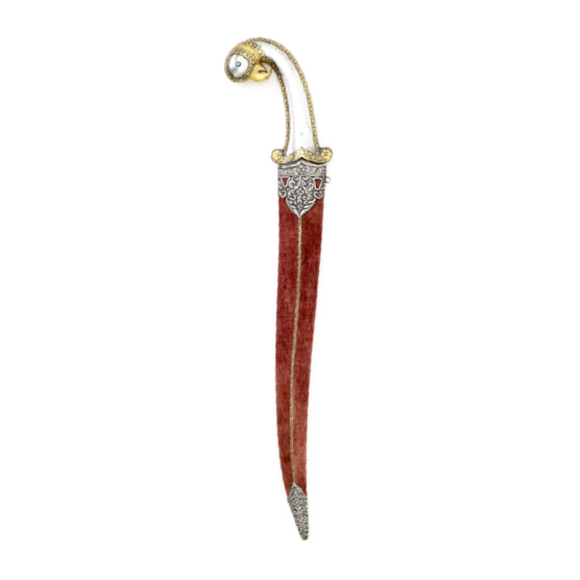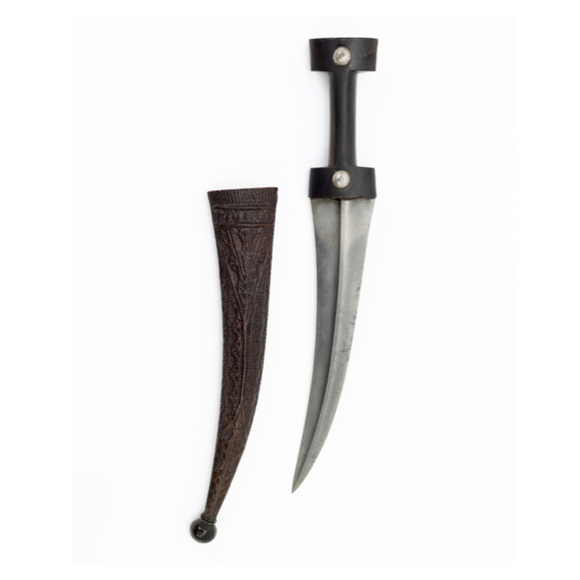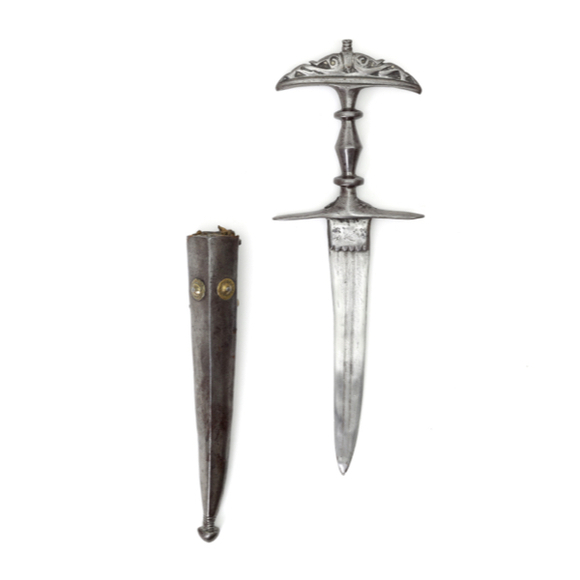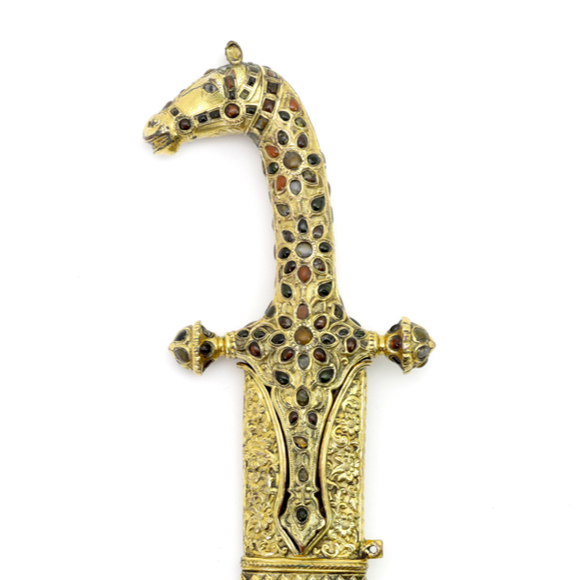With a fine wootz blade with a pronounced center ridge.

Sheathed 48.6 cm
Dagger 46.7 cm
33.3 cm
T-spine
Base 11 mm
Middle 7.5 mm
Reinforced tip 10 mm
Edge side
Base 2 mm
Middle 2 mm
Base 46 mm
Middle 21 mm
Reinforced tip 13 mm
498 grams
8 mm into hilt
Iron, steel, stone, wood, velvet, silver, brass.
Wider Punjab area
19th century
European antique art market
Description
A large dagger with a blade with a T-shaped cross-section and a strongly reinforced tip, a design optimized for thrusting through protection. I left the blade in original "as found" condition, being in a bright mirror polish with some minor age-related blemishes. It shows signs of a laminated construction and overall tight forging.
The hilt consists of a steel bolster and steel full tang construction on which two stone plates are riveted. The stone is most likely jasper.
The scabbard is made of two halves of wood, covered with worn silk velvet with a decorative band of metallic thread, Indian style. The scabbard mouthpiece is made of iron, with 18 facets, each decorated with a stylized creeper design in silver overlay. It has a separate rim on top, similarly decorated. The chape is made of brass and is a later, probably working life replacement.
Condition
The dagger itself in near excellent condition, with intact contours and edges, the point still feels as sharp as a needle. One period repair to the stone handle, the piece that was chipped off was glued back on, very well done. (See photos.)
The scabbard is structurally sound, but the silk velvet covering is in worn condition. Wear and tear on the silver mouthpiece, and a later chape of lesser workmanship.
Attribution
This style of the dagger was popular from old Persia to northern India. The style and workmanship on this one suggest it was probably made in Afghanistan or around the Punjab area, in what is now the borderlands between India and Pakistan.

Two Afghan tribesmen in 1841 by British officer James Rattray.
The one on the left wears a large dagger.
British Library collection.

















This unassuming dagger has one of the finest wootz blades with a tight ladder pattern.
The style typical of Kutch, the execution far above what is normally seen on work from that area.

